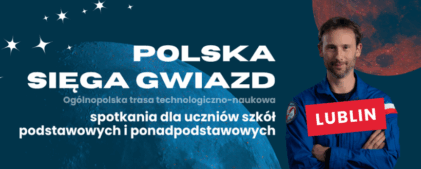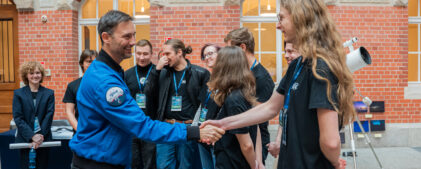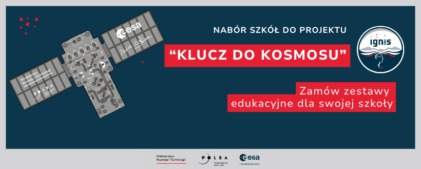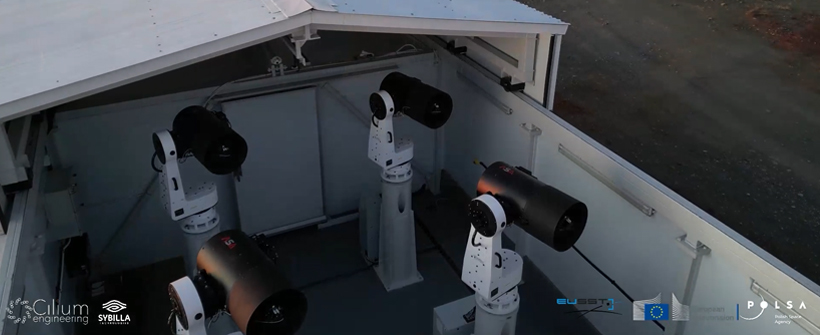The Polish Space Agency (POLSA) is undertaking an investment to modernize a globally distributed network of optical sensors used for monitoring objects near Earth, mainly satellites and space debris. This project represents the largest Polish astronomical investment of its kind in years. The acceptance proces for three new sensors, which are sets of telescopes, have just been completed. These are modern, technologically advanced, remotely operated observational robots that work within the framework of four collaborating optical systems.
Each of the three sensors consists of a set of 4 telescopes. A set of such four telescopes (optical tubes) is capable of simultaneously observing an area of over 170 square degrees (approximately 15 by 11 degrees). These telescopes are mounted on independent fast arms (mounts) and are equipped with high-resolution 14x10k sCMOS digital cameras operating at a speed of 10 frames per second. They can conduct observations independently or collectively observe a larger portion of the sky. The primary task of these new telescopes will be to survey and analyze the night sky to search for and track artificial satellites and space debris. This investment is being carried out at the request of POLSA by Polish specialized companies, Sybilla Technologies from Bydgoszcz and Cillium Engineering from Torun.
In June 2023, POLSA took delivery of three sets located on three continents:
- In Australia at the Siding Spring Observatory – POLON Australia,
- In South America at the Deep Sky Observatory in Chile – POLON Chile,
- In Africa at the South African Astronomical Observatory in South Africa – POLON Africa.
The placement of the telescopes is not random – the chosen locations have been providing some of the best astronomical observation conditions in the world for years (each of them has around 300 observing nights per year). In each of these locations, the set of four telescopes presented in this article can perform up to 100,000 individual measurements of the positions of artificial satellites in a single night. The development of such a network means that Poland could become a leading European provider of observational data.
Satellite position measurements are used to supplement and update the database and catalog of space objects, which serve as the basis for information services and analyses of threats in space. In Europe, information services are provided by the EU SST Partnership, which ensures daily protection for over 400 European active satellites, such as the Galileo, Copernicus, and Eutelsat constellations, among others. Satellite services are an important part of our daily lives – they provide fast access to weather data, navigation, the Internet, and television. Therefore, ensuring the safety and continuity of these services – that is protecting satellites from potential collisions with each other or with space debris – is crucial. Telescope observations allow for monitoring and determining the ever-changing orbits of satellites and predicting potential hazards.
The increasing number of satellites in Earth’s orbits necessitates the development of a global network of ground-based sensors that continuously monitor the situation around Earth. By 2024, the Polish Space Agency plans to complete the installation of two additional telescope sets on US territory in Utah and Hawaii. Once the investment is completed, POLSA’s telescopes will achieve full observation capability of satellites around the entire Earth, primarily in the strategically important area near the geostationary belt. This emerging investment is a unique worldwide network of advanced astronomical technological devices capable of working together under POLSA’s coordination to ensure the protection of satellite objects. This network is named POLON (POLSA Optical Network).
A distinguishing feature of POLSA telescopes is the use of state-of-the-art observational solutions. The new sensors can capture dozens of photos of the sky per second, which are then analyzed using „synthetic tracking” techniques. This enables the observation of very small space objects below 10 cm and larger objects from distances of several hundred kilometers in low Earth orbit (LEO), objects measuring 35 cm and larger from tens of thousands of kilometers in geostationary orbit (GEO), and objects measuring between 10 to 35 cm on intermediate orbits. This allows for the monitoring of most Earth orbits.
The software installed on the POLON network sets (ABOT, Astrometry24.Net) are Polish products developed as part of projects within the framework of the Polish Incentive Scheme at the European Space Agency (ESA) and grants from the National Centre for Research and Development (NCBIR), such as the „LightStream” project.
The Polish Space Agency participates in the implementation of tasks of the EU SST Partnership, along with space agencies and other institutions from 15 European Union member states. The partnership carries out tasks entrusted by the European Commission, aimed at organizing the European SST (Space Surveillance and Tracking) system, which aims to protect EU space infrastructure, economy, and population.
These tasks involve:
- Conducting observations of artificial space objects using various types of sensors – telescopes, radars, lasers,
- Creating and maintaining a European catalog of space objects,
- Providing services to inform about threats in space, including:
o Warning about possible satellite collisions (Collision Avoidance service),
o Alerts about re-entry into Earth’s atmosphere of space objects such as satellites, launch vehicles (Re-Entry Analysis service),
o Detection and reporting of fragmentation of space objects in orbit (Fragmentation Analysis service).
The investment is funded by the European Commission as part of the 2-3SST2018-20 project, covering up to 50% of the investment costs, with the remaining portion funded by the state budget. The total value of the investment is 34 million Polish złoty.







 Wróć
Wróć




